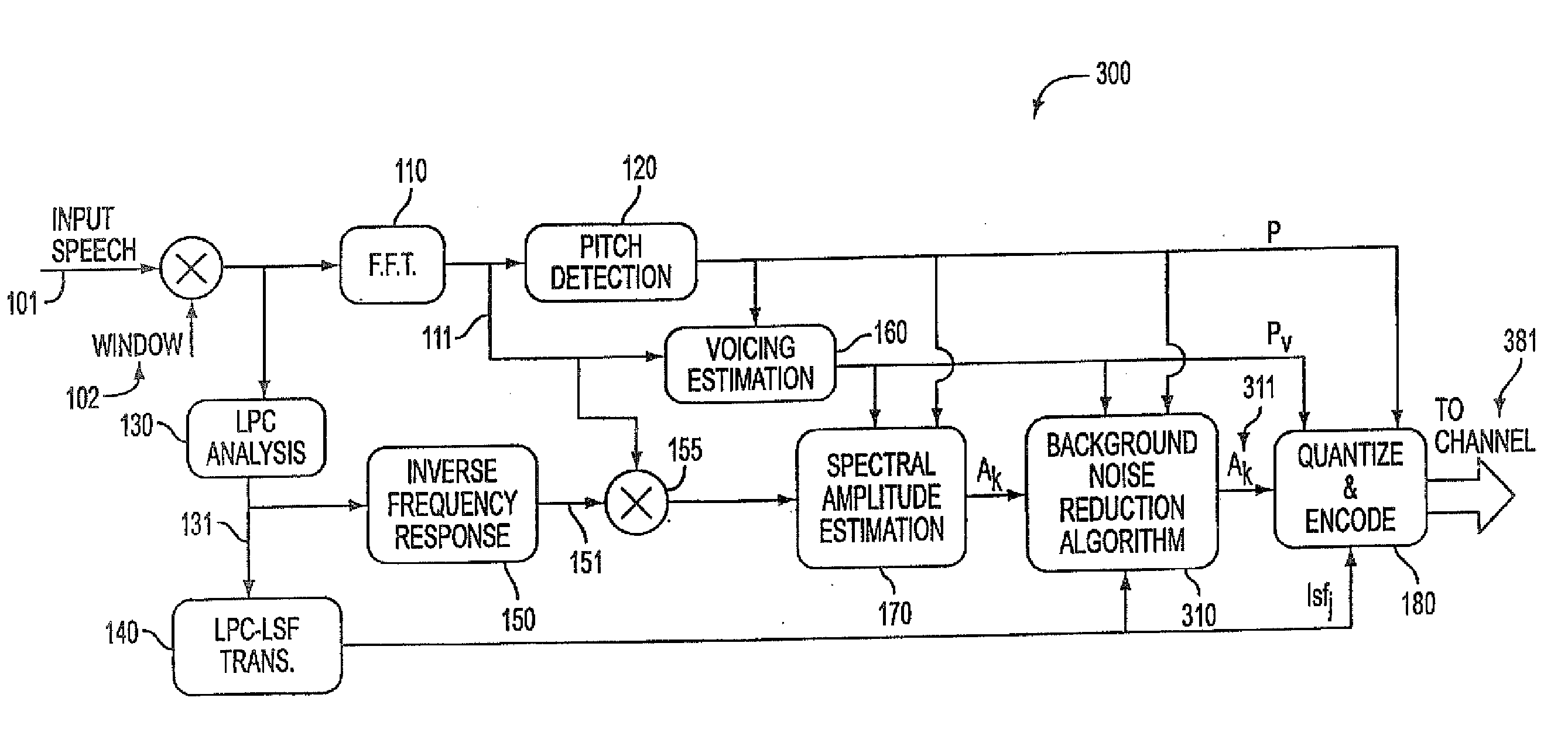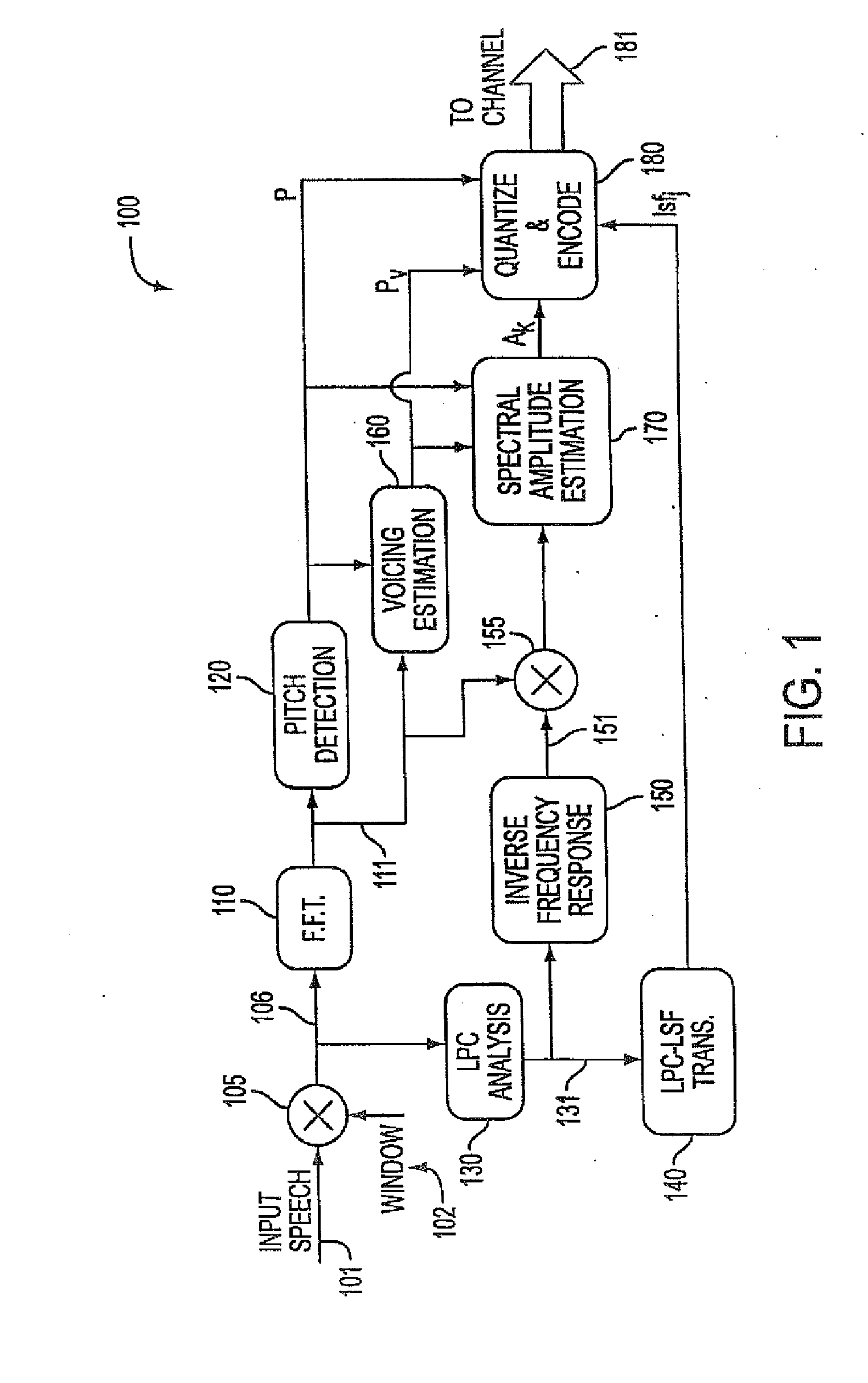Background noise reduction in sinusoidal based speech coding systems
a speech coding system and sinusoidal technology, applied in the field of background noise reduction in sinusoidal based speech coding systems, can solve the problems of limiting the usefulness of the system, speech degraded by wide-band noise, speech degraded by additive random noise, etc., and achieve the effect of reducing background nois
- Summary
- Abstract
- Description
- Claims
- Application Information
AI Technical Summary
Benefits of technology
Problems solved by technology
Method used
Image
Examples
Embodiment Construction
[0026]The preferred embodiment of the present invention can be best appreciated by considering in FIG. 3 the modifications that are made to the HE-LPC encoder that was illustrated in FIG. 1. The same reference numbers from FIG. 1 are used for those components in FIG. 3 that are identical to those utilized in the basic block diagram of the conventional circuit illustrated in FIG. 1. The operation of the components, as described therein, are identical. The notable addition in the improved HE-LPC encoder 300 circuit over the encoder 100 of FIG. 1 is the background noise reduction algorithm 310. The pitch signal P from the pitch detection circuit 120; the voicing probability signal Pv from the voicing estimation circuit 160, the spectral amplitude estimation signal Ak from the spectral amplitude estimation circuit 170 as well as the output of the LPC-LSF circuit 140 are all received by the background noise reduction algorithm 310. The output of that algorithm Ak (hat) 311 is input to th...
PUM
 Login to View More
Login to View More Abstract
Description
Claims
Application Information
 Login to View More
Login to View More - R&D
- Intellectual Property
- Life Sciences
- Materials
- Tech Scout
- Unparalleled Data Quality
- Higher Quality Content
- 60% Fewer Hallucinations
Browse by: Latest US Patents, China's latest patents, Technical Efficacy Thesaurus, Application Domain, Technology Topic, Popular Technical Reports.
© 2025 PatSnap. All rights reserved.Legal|Privacy policy|Modern Slavery Act Transparency Statement|Sitemap|About US| Contact US: help@patsnap.com



